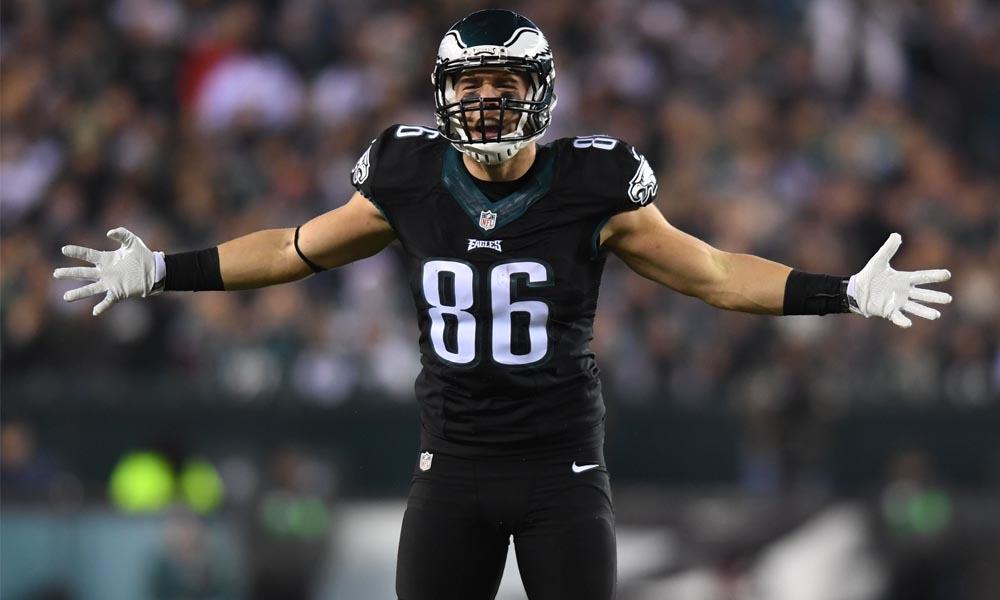How to Manage an Old, Contending Roster: Part Three

I love discussing dynasty strategy. I’ve done articles on general tips, superflex strategy, and always incorporate strategy advice into my player value articles. However, in this series, I want to focus on managing an old, contending roster. Specifically, I’m looking at established leagues, not those that began in 2021.
This series will encompass three parts. In part one, I discussed how to decide where your team stands in your dynasty league. Specifically, the worst place to find yourself in dynasty is in the middle of the standings, so dynasty managers should try to make a move toward either the top or the bottom.
In part two, I covered the strategy for those dynasty managers who decided to go all-in for 2021 and win a title. I talked about potential trades and asset consolidation and reminded dynasty managers to remain active in their leagues. I also emphasized the importance of timing, especially related to the dynasty value cycle throughout a calendar year.
Now, it’s time for part three, which will provide a roadmap for teams at the end of their contending window that need a rebuild. I know it’s not as upbeat of a topic, but sometimes it’s time to start over.
Let’s jump into how to execute that process!
Revisiting Part One
In part one, I discussed the following metrics in evaluating your potential contending roster: starting lineup, depth, 2021 rookie picks, and future rookie picks. In part two, I gave advice for those who decided that it possessed enough strength to be a viable contender in 2021. But let’s say you performed the same exercise, and you decided that your team didn’t have the strength to contend for a championship in 2021. Then, you need to rebuild.
I love the rebuilding process. There are so many different approaches, but I’ll give you my favorite way to do it. Let’s start with my recommended first step of any rebuild.
Reacquire Your Future First-Round Picks
Often contenders traded away their future first-rounders to help buy pieces to go for a title. Whether that worked out or not in 2020, it’s now time to mitigate that damage. In most dynasty leagues, the rookie draft order comes from the previous season’s finishing order. Therefore, if you want to start a rebuild, it would help to have your own first-round picks. That way, if you lose a bunch of games, you can at least start over with a high rookie pick in next year’s rookie draft.
I’m not saying that you must do this to rebuild. Sometimes, the opposing manager won’t trade you that first-rounder. However, if you reacquire your pick before blowing up your team, it won’t look like it’s going to be an early pick necessarily. That’s why I recommend trying this play first before making other moves. But as I said, don’t force it if you can’t make it happen easily and at a good value.
Try and Sell Veterans Now to Acquire 2021 Picks
Like most dynasty analysts, I believe in the 2021 rookie class. I think it’s a strong group of players, especially outside of the running back position. In superflex leagues, this class contains five quarterbacks that will likely go in the first round of the NFL Draft, along with a deep and strong wide receiver selection. It only has three high-profile running backs in Najee Harris, Travis Etienne, and Javonte Williams.
Best of all, the class makeup is perfect for rebuilding teams, as the running back position is the worst to rebuild around. I always recommend stockpiling young receivers and young quarterbacks in superflex leagues. Those assets tend to hold their dynasty value for longer, whereas running backs typically lose value around age-26. Also, contenders tend to want running backs with their rookie picks, and this class doesn’t have many of those. I expect contenders to be even more willing to trade their later first-rounders and second-rounders than other years.
Therefore, even though veterans can be tough to sell this time of year, I think it’s a good idea to try and acquire picks in this class if possible. Don’t take lowball offers, but if you can get fair value for your veterans, take it. Rebuilds are always faster when you get current picks instead of waiting for selections far in the future. There are plenty of good players in this class, and it’s a great class with which to center your young team.
Have Patience After the Rookie Draft
Most dynasty rookie drafts take place right after the NFL Draft, in late April or early May. If you still have declining veterans on your roster after that point, such as Julio Jones, Adam Thielen, David Johnson, or Zach Ertz, I suggest waiting to sell them. In August, dynasty managers will begin to realize that they have holes on their rosters and start to panic.
At that point, the value of 2022 and 2023 rookie picks will reach a nadir, opening a buying window. I recommend capitalizing on that window to eliminate those veterans from your team. I don’t advise carrying those aging players into the season, though, as one injury will sap any opportunity to recoup value. Clear all those players out before the season begins.
Retain Younger Players as Cornerstone Assets
I also want to emphasize that I am not suggesting that you should sell all of your veteran players for draft picks. If you rebuild that way, the process will take years, and you’ll donate to the league pot for a while. If you have young receivers like Justin Jefferson, DJ Moore, CeeDee Lamb, or stud quarterbacks in superflex leagues such as Kyler Murray or Josh Allen, don’t sell them.
Those players will likely still hold dynasty value when you want to contend, and they should represent cornerstone assets on your team. Studs are always tricky to find during any stage of a dynasty team, and young studs are typically impossible to buy. Therefore, I don’t suggest selling players in that category. I would also recommend DLF’s cornerstone asset rankings for a good idea of how to value these young, stud players.
Remain Active
No matter what tips I provide, there’s no one-size-fits-all method to rebuilding a dynasty roster after its contending life cycle ends. However, the most critical part of doing so is to work to improve your roster continuously. When rebuilding, it’s essential to accumulate dynasty value as often as you can, as dynasty value will eventually bring your roster back to contention. It might seem like a long road back to contention, but trust me, it will take twice as long if you’re not an active trader and dynasty manager.
- Forgotten Dynasty Youth: Top Tier - March 27, 2024
- NFL Expiring Contracts In 2025: Tight End - February 25, 2024
- NFL Expiring Contracts In 2025: Wide Receiver - February 18, 2024

































































